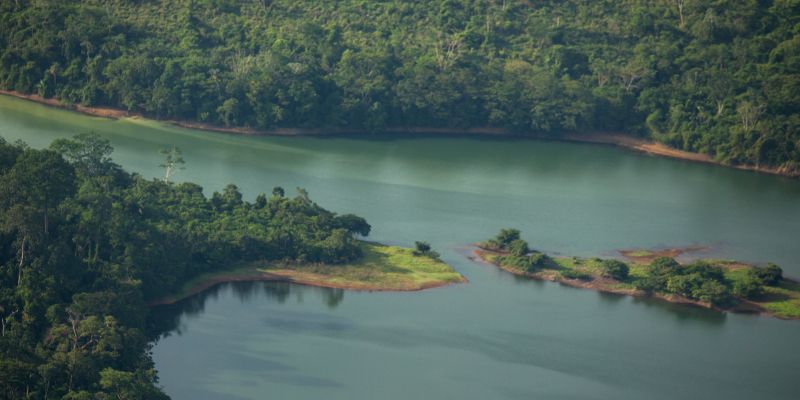
More than half of all tree species in the world’s most diverse forest – the Amazon – may be globally threatened, according to a new study.
But the study, published today in the journal Science Advances, also suggests that Amazonian parks, reserves and indigenous territories will protect most of the threatened species, if properly managed.
The findings were announced by a research team comprising 158 researchers from 21 countries, led by Dr Hans ter Steege of Naturalis Biodiversity Center in the Netherlands and Dr Nigel Pitman of the Field Museum in Chicago, USA. The pan-Amazon RAINFOR network led by the University of Leeds contributed hundreds of forest monitoring plots to the effort.
Professor Oliver Phillips, from the School of Geography at the University of Leeds, said: "To put the threat to Amazon diversity in context, this unprecedented analysis shows that for each tree species found in the British Isles there are now up to one hundred and seventy threatened in the Amazon."
Forests in the Amazon have been declining since the 1950s, but scientists still have a poor understanding of how this has affected populations of individual species.
The new study compared data from forest surveys across the Amazon with maps of current and projected deforestation to estimate how many tree species have been lost, and where.
The authors concluded that the Amazon could harbor more than 15,000 tree species, of which 36-57% likely qualify as being globally threatened under IUCN Red List of Threatened Species criteria.
“We aren’t saying that the situation in the Amazon has suddenly gotten worse for tree species,” said Dr Pitman. “We’re just offering a new estimate of how tree species have been affected by historical deforestation, and how they’ll be affected by forest loss in the future.”
The research team had previously reported that the Amazon may harbour more than 15,000 tree species. The new study estimates that up to 8,690 of those species may face extinction. Because the same trends observed in Amazonia apply throughout the tropics, the researchers argue that most of the world's tropical tree species (more than 40,000 species) likely face the same risk.
Fortunately, the authors say, protected areas and indigenous territories cover over half of the basin, and likely contain sizable populations of most threatened species.
“This is good news from the Amazon that you don’t hear enough of,” said Dr ter Steege. “In recent decades Amazon countries have made major strides in expanding parks and strengthening indigenous land rights,” he said. “And our study shows this has big benefits for biodiversity.”
The authors caution that Amazonian forests and reserves still face a barrage of threats, from dam construction and mining to wildfires and droughts intensified by global warming, and direct invasions to indigenous lands.
“This generation still has the power to make a huge difference,” said Professor Phillips. “Most species can still survive, but only if we protect enough of the Amazon from the forces of deforestation and climate change.”
Further information
RAINFOR is funded by the Natural Environment Research Council (NERC), the European Research Council and the Royal Society.
The research paper, ‘Estimating the global conservation status of over 15,000 Amazonian tree species’, is published online in the journal Science Advances.
Professor Oliver Phillips is available for interview. Please contact the University of Leeds press office on 0113 343 4031 or email pressoffice@leeds.ac.uk